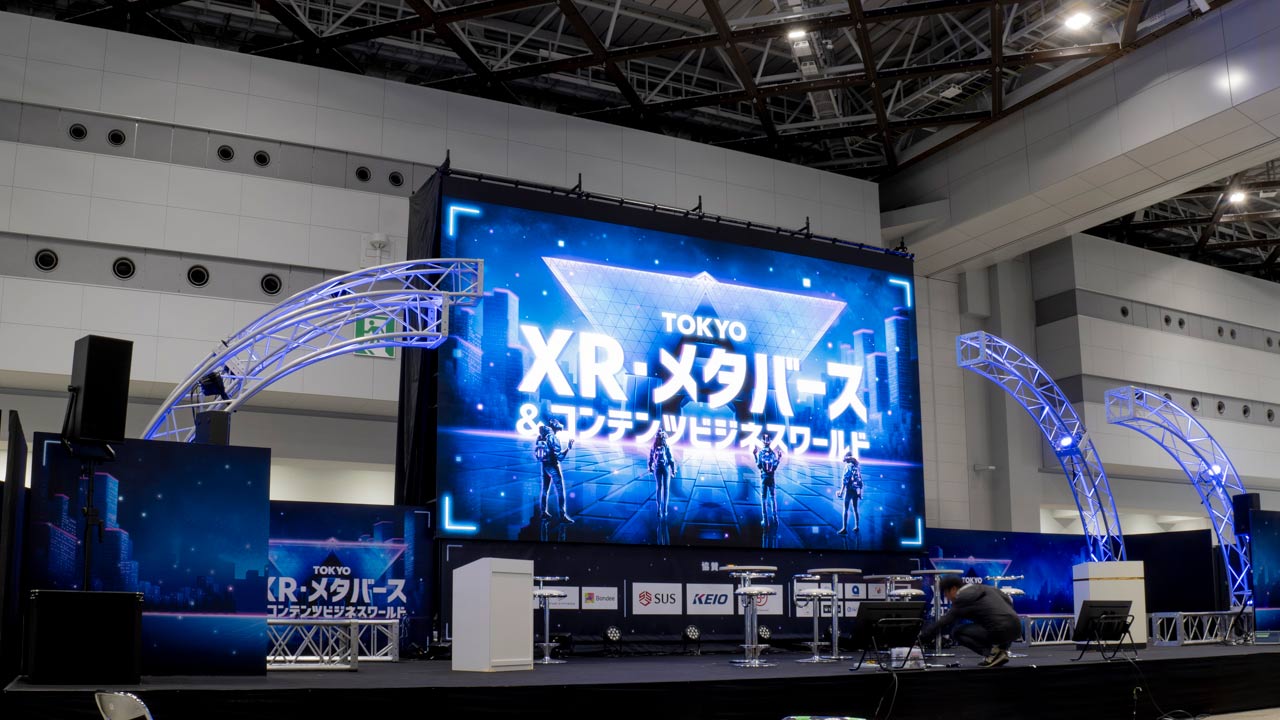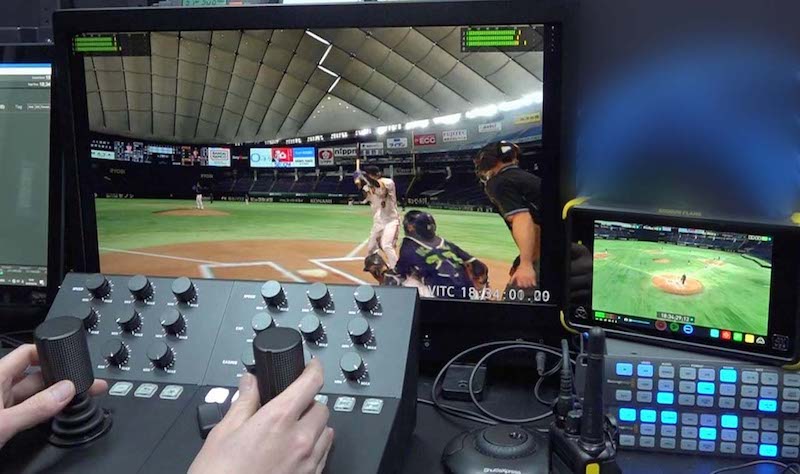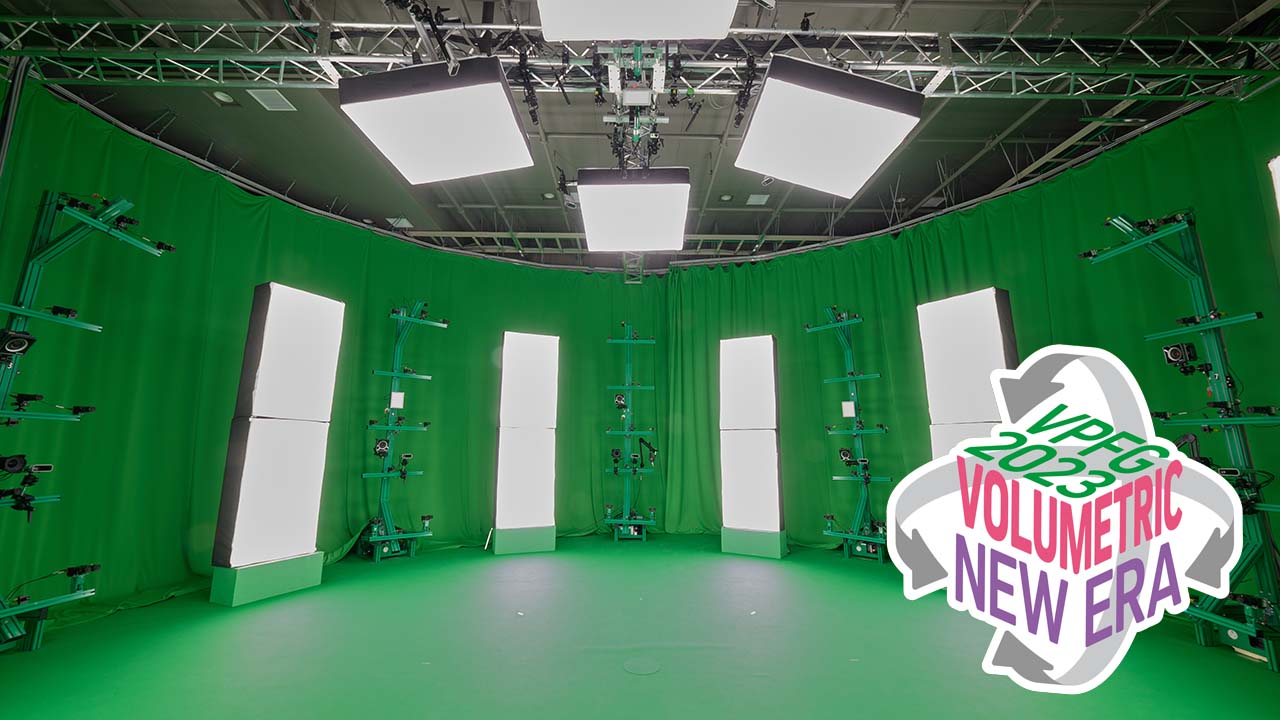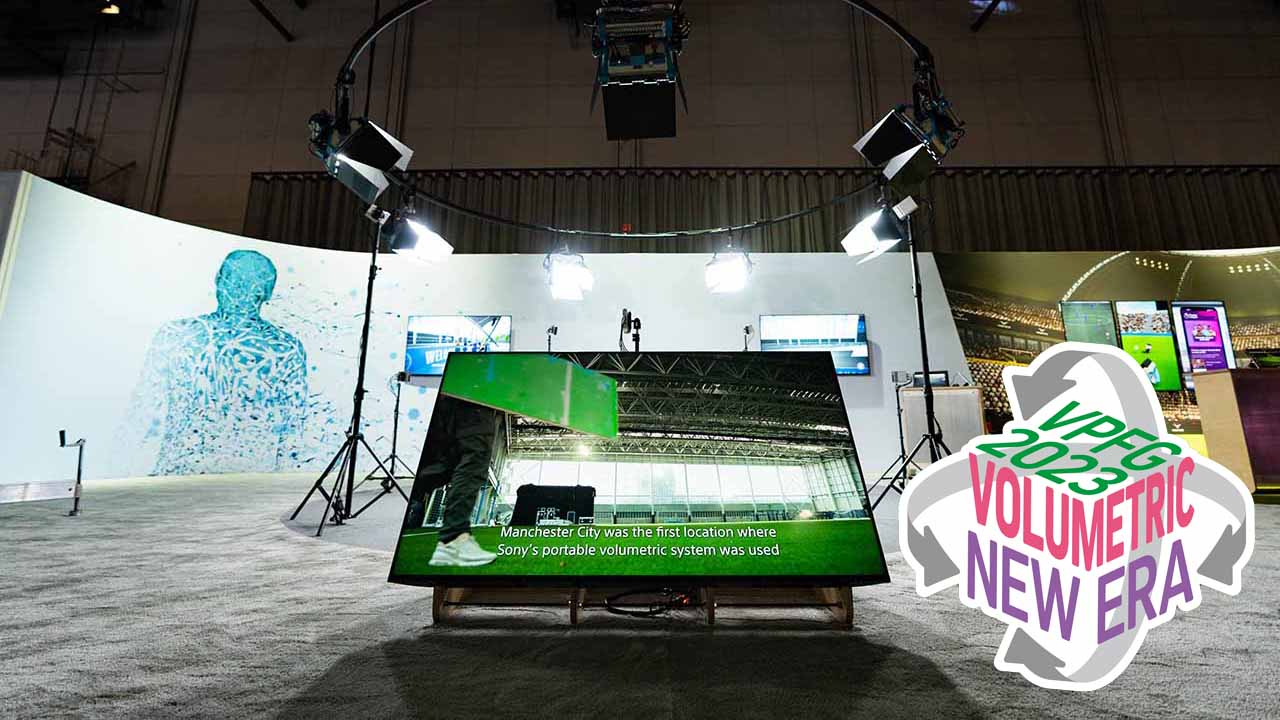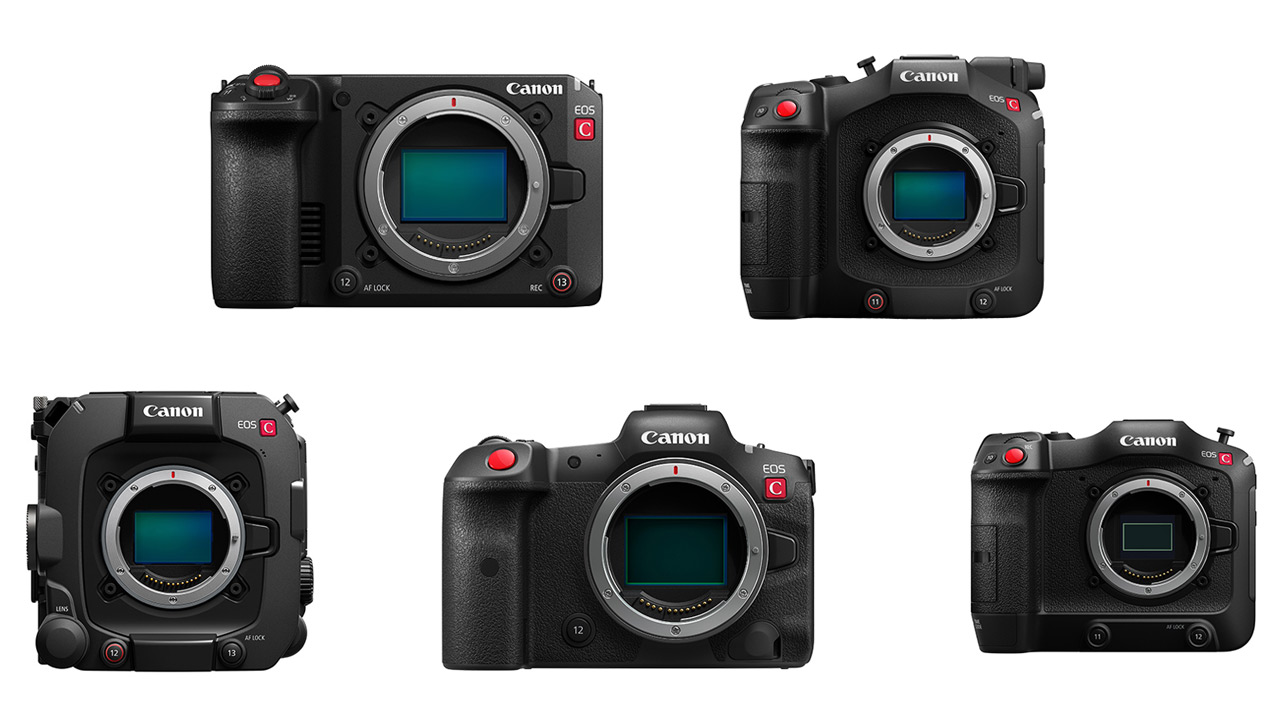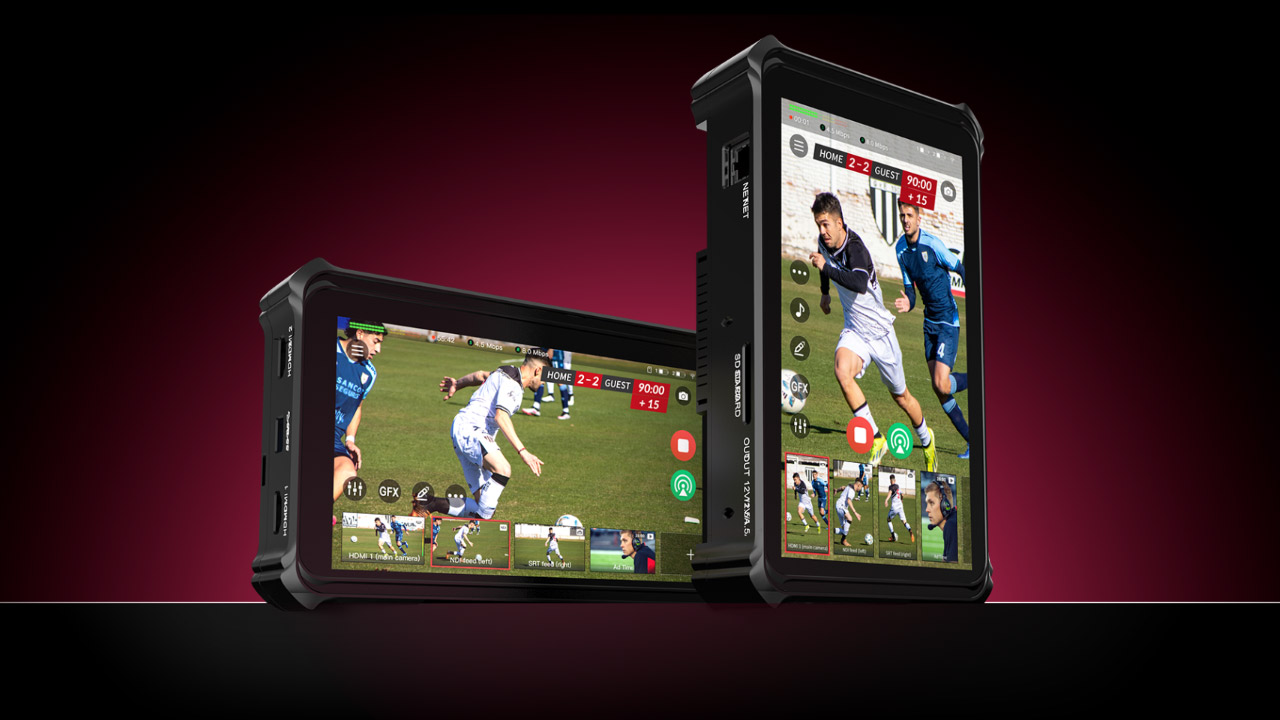- Cleveland Cavaliers announce C-View implementation at panel discussion with NBA
- From Inter BEE to the Rugby World Cup, and then to sports around the world
- Standing in the center of the court, you can experience the realism of the players slipping through
- Real-time viewing of VR from home is not a dream
- Approaching the Secrets of Canon’s Volumetric Video Technology
Cleveland Cavaliers announce C-View implementation at panel discussion with NBA
At PRONEWS, we believe that volumetric video trends should be actively focused on, and we have introduced the latest trends such as “Volumemetric Video Studio-Kawasaki” and “Canon x Nippon Television Baseball Live Video” earlier than anywhere else. For the introduction of Kawasaki Studio, please refer to past articles, but in this article, we will introduce Canon’s volumetric video trends in Japan and overseas. Let’s start with overseas trends.
Canon USA will exhibit at the world’s largest technology trade fair “CES 2023” again this year. A press conference was held on January 4, 2023 local time to introduce the company’s innovations such as “AMLOS”, which won the “CES Best of Innovation Award”, and the virtual reality platform “Kokomo”. Among them, the major media focused on and reported on Director M. Night Shyamalan, who was on stage at the press conference, but in fact, the NBA (National Basketball Association) and Canon’s panel discussion also announced content that should not be overlooked. . A Cavaliers official announced a new attempt to experience the game from inside the court with a service that allows you to watch volumetric videos of sports games on a VR headset.

A panel discussion was held with Canon USA and the NBA. Michael Larson from Canon USA, Steve Hellmuth from the NBA, Michael Conley from the Cavaliers, and David Cole from the Sports Innovation Lab.
From Inter BEE to the Rugby World Cup, and then to sports around the world
Before introducing the new service, let’s take a look back at the history of Canon’s volumetric video system. Canon made a press announcement in September 2017 about the development of a volumetric video system, and presented video examples at Inter BEE 2017. At that time, at Inter BEE, “the volumetric video display at the Canon booth was amazing” was a hot topic in the press room. I clearly remember the shock when I heard the story.
The 2019 Rugby World Cup was when volumetric video became a convincing presence. It was a quiet start with unknown technology, but when the immersive highlight video was released on the Internet, it caused a great response around the world. I heard that there was a lot of interest from the sports industry in the United States, especially from the NBA.
Finally, it was decided to install a volumetric video system at the Barclays Center, home of the Brooklyn Nets, and Rocket Mortgage Fieldhouse, home of the Cleveland Cavaliers. Both teams basically use the same volumetric video system, but the camera placement and system configuration are optimized according to the specifications of the facility.

Returning to the topic of the CES panel discussion, Cleveland Cavaliers Chief Information Officer and Head of Technology Michael Conley introduced the unique development of the new service “C-View” system. C-View is the nickname the Cleveland Cavaliers have for Canon’s volumetric video system, just as the Brooklyn Nets call their volumetric video system “Netaverse.”
In line with the start of the 2022-2023 season (October 18, 2022 to April 9, 2023), the Cavaliers will expand services such as broadcasting applications, social platform support, and display on large screens at the venue. Ready. In line with this, the content of this announcement is that the generic name of the service that Canon provides to the Cavaliers has been renewed to “C-View”.
Standing in the center of the court, you can experience the realism of the players slipping through
One of the most interesting introductions by Mr. Conley was the introduction of “C-View VR.” C-View VR reproduces the contents of past games of the real Cavaliers and allows you to stand in the center of the VR virtual space. It was introduced that it is possible to experience the realism of the players actually approaching and running through.

According to a Cavaliers press release, on December 16, 2022, Rocket Mortgage Fieldhouse will feature a new volumetric video of the actual game and VR headsets. Through a VR headset, a visitor wearing a VR headset performs VR activation to view volumetric video data generated from the Cavaliers vs. Los Angeles Lakers game on December 6, filmed with C-View Those who stood side by side in the scene where the Cavaliers’ Darius Garland scored a 3-point shot, moved around from the center of the court with their favorite viewpoints and camera angles, and watched important scenes of the game.
Real-time viewing of VR from home is not a dream

In fact, the NBA has been actively working on live broadcast distribution using VR technology since 2015. However, even though it is possible to realize a free camera angle, most of the services have installed VR cameras on the side of the court and provided the viewers with a VR experience from there. In the end, it was decided to watch from outside the court, and there was a limit to the sense of immersion and presence.
C-View VR seems to be able to realize an experience beyond that limit. Canon’s volumetric video technology captures the entire court, allowing viewers to stand anywhere in space. In that sense, it can be said that it is a big announcement that it can provide a powerful experience to the fans in the venue.
Canon’s volumetric video system for stadiums and arenas is a technology specialized for real-time, and it is possible to generate images three seconds after shooting. In the future, expectations are only rising that it will be possible to watch the game in real time from anywhere on the court at home.

Approaching the Secrets of Canon’s Volumetric Video Technology
From here, let’s take a look at Canon’s domestic trends. We interviewed Mr. Atsushi Date and Mr. Takayuki Hashimoto, General Manager of Canon Inc.’s SV Business Promotion Center, about the strengths of Canon’s volumetric video technology.
At the beginning, Canon heard from the difference between the system for stadiums & arenas and for studios. Sony PCL, Nikon Creates, NHK Science & Technical Research Laboratories, and Crescent, which have been introduced in this feature, are all indoor studios. However, only Canon is developing two types of studios and stadiums and arenas. I have long wondered why only Canon can develop stadiums and arenas. What is the difference between Canon’s systems for studios and stadiums and arenas?

The summary of Mr. Date’s response is as follows.
It’s the same system with the same basic idea. For stadiums and arenas, it is said that there is some fine adjustment for each venue by setting up a certain number of cameras and setting up an area to shoot volumetric video.
So why is it possible to shoot volumetric video over a wide area like an arena or stadium?
The answer is that it is not possible to capture a wide area with a single technology, but rather by accumulating various technologies. Volumetric video depends on the performance of the camera and lens, and the resolution decreases as the distance of the subject to be shot increases. However, Canon is a camera manufacturer, and it is said that it has the strength to deal with the problem around that.
Also, in order to shoot in a large area, wiring to connect about 100 cameras to the computer is required. It is said that if you try to connect the camera to the computer with more than 100 wires, the cable length will be about 10km. Therefore, Canon developed a relay-like cable connection method and built a mechanism to reduce the amount of wiring. This is one of the reasons why it can be installed in a wide area.
Furthermore, in shooting sports where the subject moves rapidly, the subject disappears or becomes blurred unless the timing of releasing the shutter of more than 100 cameras is precisely matched. Therefore, we developed a mechanism that allows more than 100 cameras to release the shutter accurately in units of microseconds. Without this technology, it will be impossible to create a volumetric video of a fast-moving subject over a wide area.
Canon, together with the All Japan Judo Federation, filmed and produced a promotional video promoting the appeal of judo using volumetric video technology.
Also, in order to capture a try in rugby highlight scenes, it was necessary to create a volumetric video of the entire field. Therefore, they developed a new technology that realizes a camera arrangement that can produce images of the entire field with the same quality. This technology is also applied to Volumetric Video-Kawasaki.

The technology of camera placement is also applied to volumetric video-Kawasaki. Volumetric video – Kawasaki’s camera does not point in one direction. At first glance, it is facing in such a different direction that it is difficult to know where it is facing.Finally, Mr. Hashimoto introduced the strengths of Canon’s volumetric video.
Mr. Hashimoto: The first feature is quality. Quality is second to none. We have already achieved the quality that can be used in TV song programs, dramas, commercials, etc. In addition, it is also characterized by being able to reproduce, for example, the texture of clothes and the smooth swinging of skirts.
The second is the size. Our Volumetric Video-Kawasaki achieves a spatial imaging range of 8m x 8m. Within that area, high-definition images can be provided even when multiple people enter at the same time.
The third is real-time video generation, which is also used in sports. In addition to being used for sports replays and highlights, the same system is also used on the studio side, so playback video can be played back in real time. With our system, you can proceed with the on-site shooting without having to wait.

Canon’s volumetric video content is full of surprises, such as professional baseball broadcasts and collaborations with manager M. Night Shyamalan. I expect that in the near future, more powerful professional baseball broadcasts and services for end-user fans such as C-View VR will be developed in Japan. Expectations for Canon’s volumetric video are only rising.



